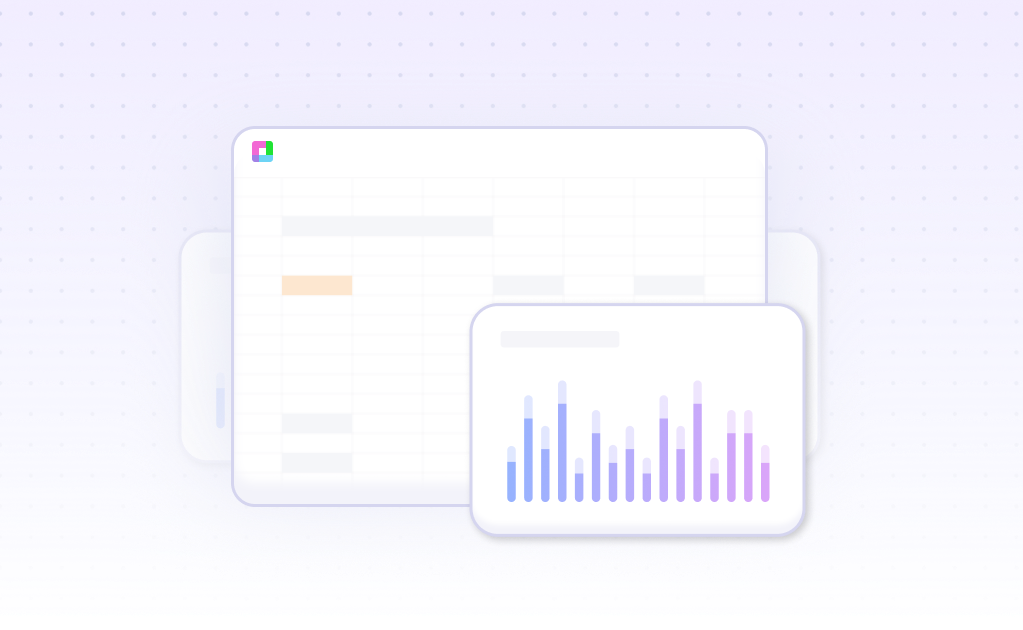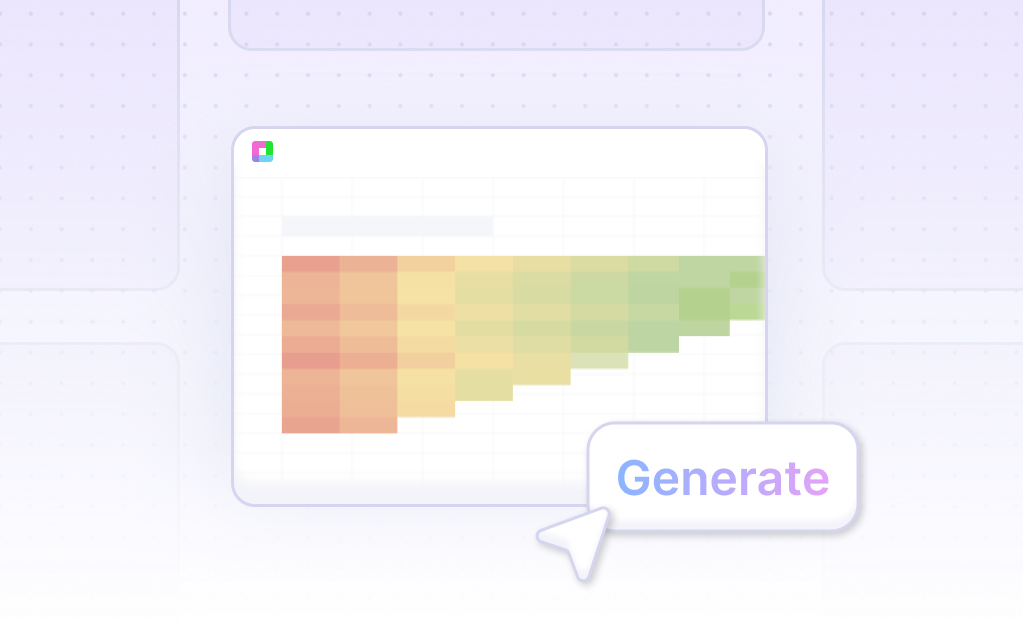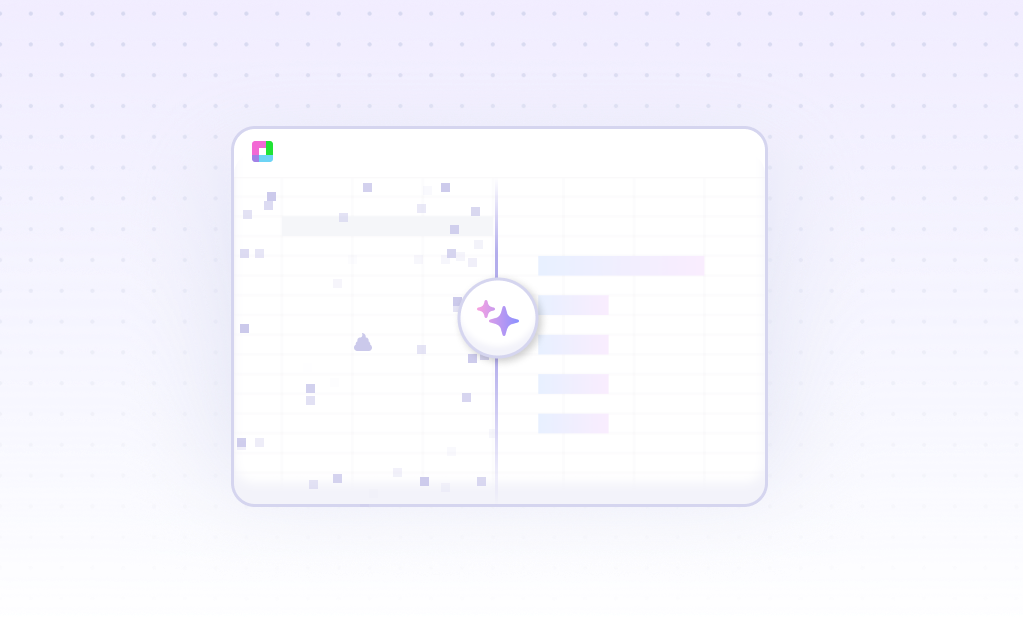
Introduction
Understanding the detailed dynamics of data segmentation is vital, and a Pie of Pie chart offers a clear visual hierarchy of complex data sets. Whether using traditional spreadsheet tools like Excel or Google Sheets or leveraging advanced AI technology through Sourcetable, creating a Pie of Pie chart can be straightforward.
Sourcetable enhances this process by integrating AI capabilities that simplify the creation of charts and graphs. While traditional spreadsheet programs require manual setup, Sourcetable's AI spreadsheet assistant can automatically generate these charts, helping you to quickly visualize data subdivisions without extensive spreadsheet knowledge.
To take full advantage of these advanced features, sign up for Sourcetable to generate your first Pie of Pie Chart with ease, or keep reading to learn more about using both AI and traditional methods.
What is a Pie of Pie Chart?
A Pie of Pie Chart is a circular chart that shows data in a circular way, partitioned into two separate pie charts. This type of chart is particularly useful for emphasizing a group of values within a category, making small data portions more noticeable.
Features
The Pie of Pie Chart features two circular pies. The second pie is used to emphasize certain values from the first pie, allowing for a clear visual breakdown of data within a category. This design offers a unique way of displaying complex data sets in a more understandable format.
Usage
Pie of Pie Charts are ideal for visualizing categorical data and can handle data that may not fit well in a standard pie chart. They are especially effective when the values are percentages or proportions, or when the summary statistics for each group are not totals.
Comparison with Standard Pie Charts
Pie of Pie Charts provide a better visualization of data that requires a detailed breakdown within a category. They are superior to standard pie charts in presenting summary statistics and percentages, making them an excellent choice for detailed data analysis.
Benefits
Pie of Pie Charts offer several benefits including immediate data analysis, ease of understanding, and effective communication, even for an uninformed audience. They allow for quick comparison of data at a glance and are simple to create.
Customization
In Excel, Pie of Pie Charts can be customized in various ways to better suit the data being presented. This flexibility makes them a powerful tool for data visualization and analysis.
When to Use a Pie of Pie Chart
Overview
The Pie of Pie Chart is ideal for displaying part-to-whole relationships, emphasizing smaller segments that might be difficult to see in a standard pie chart. This chart type breaks out a small portion of the pie into a secondary pie, offering greater clarity.
Advantages of Pie of Pie Charts
Pie of Pie Charts excel in highlighting detailed slices within a dataset, making them easier to compare. They simplify complex data by isolating smaller segments, ensuring visibility and understanding. This ability to offer a focused view is particularly useful in reports and presentations.
Drawbacks of Pie of Pie Charts
Despite their strengths, Pie of Pie Charts can become cluttered if overused. They may complicate interpretability when containing too many slices, leading to confusion. Therefore, they are best suited for datasets with a few minor categories needing emphasis.
Comparison with Other Charts
Compared to standard pie charts, Pie of Pie Charts provide better visualization of minute data points. However, bar charts can be more effective for comparing individual parts since they avoid the clutter of pie slices. Line charts offer superior trend analysis but lack the part-to-whole context Pie of Pie Charts provide.
Best Practices
For optimal use, limit the number of categories in a Pie of Pie Chart. Use it when a few specific small segments need focus, and always ensure labels and legends are clear for ease of interpretation. This targeted approach enhances clarity and viewer comprehension.
How to Generate a Pie of Pie Chart with Sourcetable
- Sourcetable, an AI-powered spreadsheet, simplifies the creation of Pie of Pie Charts. Unlike traditional methods in Excel or Google Sheets, using Sourcetable's AI is more efficient and user-friendly. This guide outlines the steps for generating a Pie of Pie Chart seamlessly.
- First, you need sample data. Create this using Sourcetable's AI assistant or upload a CSV file. The AI assistant quickly generates relevant data, saving you time.
- Next, select the data range you want to visualize. With the data highlighted, you can proceed to the next step. Ensuring you have the right data is crucial for accurate chart creation.
- Then, ask the AI assistant to generate a Pie of Pie Chart. The process is swift and intuitive. The AI understands your commands and quickly produces the desired chart.
- Finally, refine your Pie of Pie Chart. Use the AI assistant to adjust formatting, labels, and other chart elements. Iterating on your chart ensures it meets your specific needs and preferences.
- Using Sourcetable AI for creating Pie of Pie Charts is the easiest method available. It offers speed, accuracy, and customization, making data visualization effortless.
How to Generate a Pie of Pie Chart in Excel or Google Sheets
Creating a Pie of Pie Chart in Excel
Pie of Pie charts in Excel make small slices of a pie chart easier to see by separating them from the main pie. To create one, start by right-clicking your existing pie chart. Click on Change Series Chart Type. Next, select Pie and then choose Pie of Pie to generate your desired chart. Alternatively, you may select Bar of Pie to create a different visual variation that also highlights smaller slices.
Creating a Pie of Pie Chart in Google Sheets
Open Google Sheets and input your data, organizing it with clear category labels. Highlight your data and go to the top bar, then click on the Insert option followed by Chart. Set up a pie chart and use the Chart Editor to customize it. You can change colors, add a title, and adjust the legend among other options. Once finished, click Insert in the Chart Editor to complete your chart.
Formatting Data for Pie Charts in Excel and Google Sheets
When formatting data for a pie chart in either Excel or Google Sheets, ensure each part of your data series is represented clearly. Enter a label or category in the first column and positive numeric data in the second column. Adding a label name in the first row is optional. Each row will represent a slice of the pie chart, making it easy to visualize and compare different categories within a dataset.
Use Cases Unlocked by Visualizing Data Using a Pie of Pie Chart
Analyzing Market Share Distribution |
Visualizing market share distribution with a Pie of Pie chart allows businesses to see main and sub-segment shares. This format is beneficial for recognizing primary dominant players and detailed view segments. |
Budget Allocation Breakdown |
A Pie of Pie chart is useful for breaking down overarching budget allocations into smaller, more manageable parts. It helps organizations understand how high-level budget categories are subdivided into specific expenditures. |
Customer Demographics |
Pie of Pie charts help in visualizing customer demographics by displaying general demographic information alongside more detailed demographic subgroups. This aids in understanding overall customer composition and specific traits. |
Product Sales Analysis |
Using a Pie of Pie chart to analyze product sales allows companies to see the overall sales performance while also examining the contributions of individual product categories. This can identify high-performing and underperforming segments. |
Frequently Asked Questions
What is a Pie of Pie Chart in Excel?
A Pie of Pie Chart in Excel is a chart type that splits a single pie chart into two pies to show a larger portion of data more clearly. The first pie is the main chart, while the second pie is the secondary chart.
How can I create a Pie of Pie Chart in Excel?
To create a Pie of Pie Chart in Excel, open an existing workbook or create a new one, click on the Insert tab, select the Pie Chart option from the list of Charts, and choose Pie of Pie from the list.
What data is best represented by a Pie of Pie Chart?
A Pie of Pie Chart is best used to compare a group's contribution to the whole or to show how a total amount is divided between levels of a categorical variable. It helps to represent data visually as a fractional part of a whole.
How should I interpret the results of a Pie of Pie Chart?
When interpreting a Pie of Pie Chart, compare the proportion of data in each category by looking at the size of the slices. The size of each slice indicates what proportion of the whole each category level takes.
What are the benefits of using a Pie of Pie Chart?
Pie of Pie Charts enable the audience to see a data comparison at a glance, allow for immediate analysis, and are simple to create and easy to understand. They can be effective communication tools, even for an uninformed audience.
Conclusion
Throughout this guide, we explored the Pie of Pie Chart, an advanced graphical tool for data representation. We discussed generating this chart using AI in Sourcetable, and similarly, how to create it using traditional spreadsheet programs like Excel and Google Sheets.
Sourcetable simplifies complex data operations with its AI-powered spreadsheet assistant, making it accessible for users at all skill levels to build charts and graphs efficiently.
To take your data visualization to the next level, sign up for Sourcetable and generate your first Pie of Pie Chart today.
Frequently Asked Questions
If you question is not covered here, you can contact our team.
Contact Us





